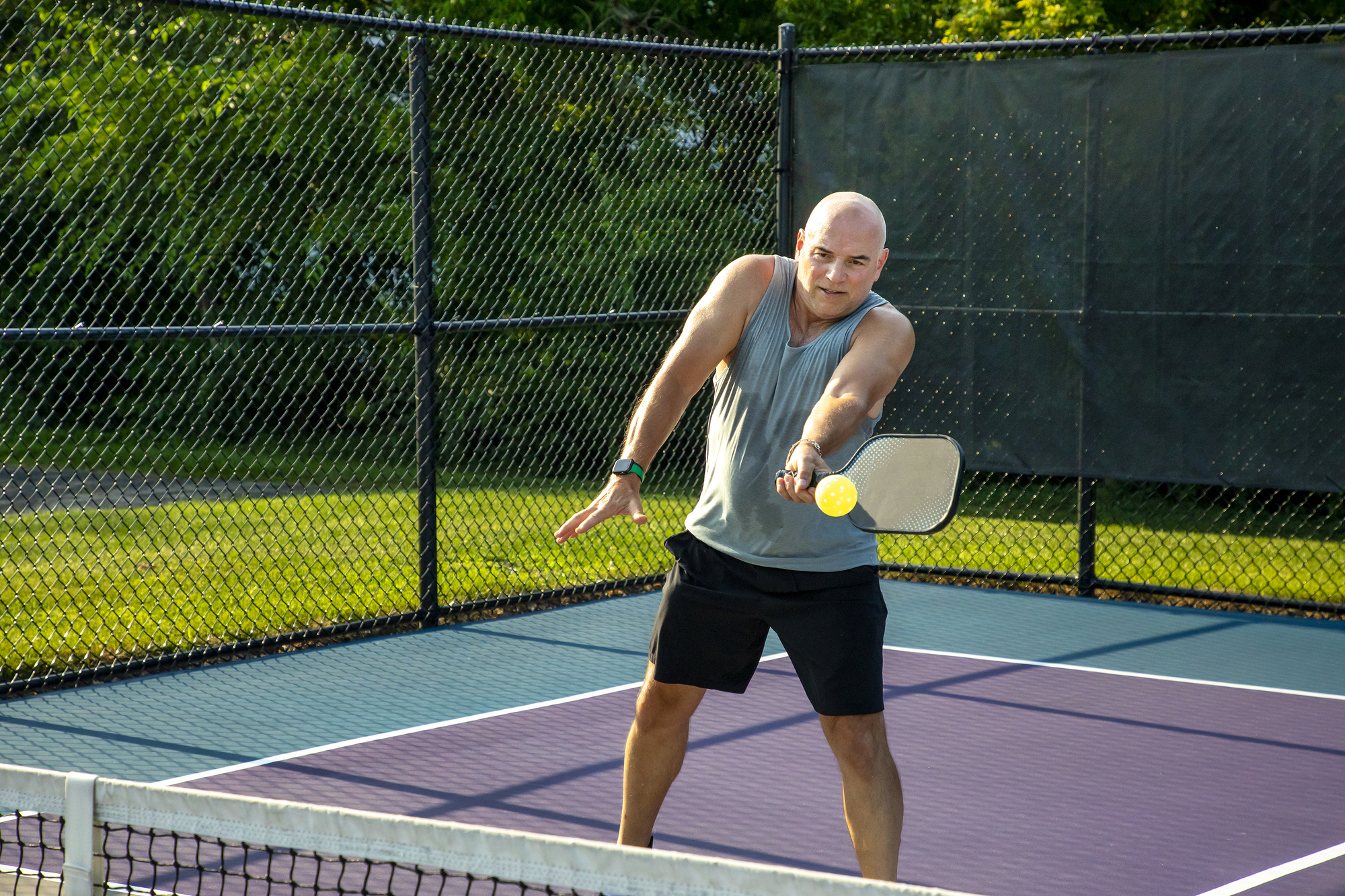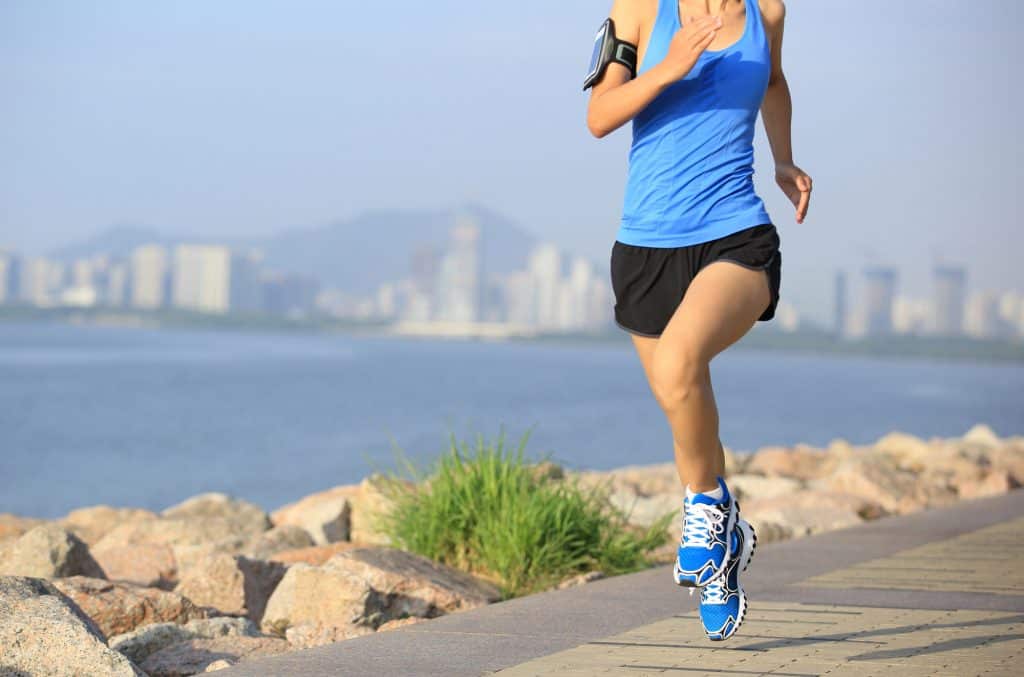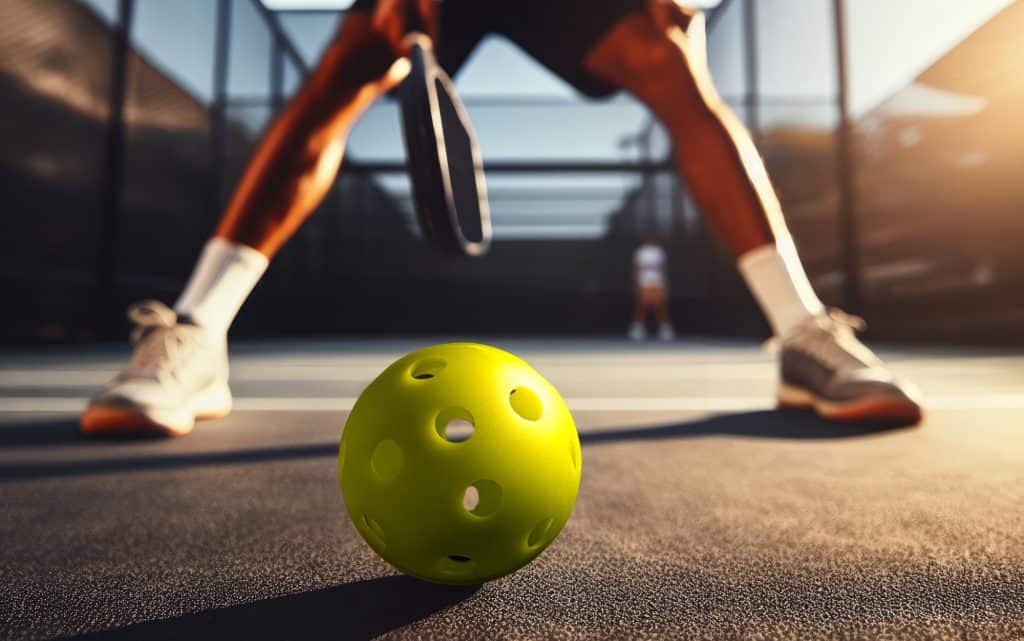Pickleball Calorie Burn: Analysis of Calories Burned Every Game

How Many Calories Does Pickleball Burn: A Comprehensive Analysis
Pickleball is growing in popularity, not just for its fun and social aspects but also for its health benefits. One intriguing question for many enthusiasts is, “How many calories does pickleball burn?” A 160-pound person can burn approximately 500 calories per hour, while a 200-pound person might burn around 700 calories per hour. The intensity of the game can also affect these numbers, with harder play leading to even greater calorie expenditure.
Pickleball offers an engaging way to stay fit and healthy. Combining elements of tennis, badminton, and ping pong, it is played on a small court with solid paddles and a whiffle ball. This mix of movements ensures a comprehensive workout, contributing to improved cardiovascular health and weight management. For those looking to maximise their fitness routine, pickleball can be both an enjoyable and effective option.
Besides burning calories, pickleball also promotes overall physical well-being. Regular play can increase agility, improve reflexes, and enhance coordination. These health advantages make it a popular choice among people of various ages and fitness levels. By knowing how many calories can be burned and understanding the health benefits, players can better appreciate the fitness potential of this dynamic sport.
Understanding Pickleball
Pickleball combines elements of tennis, badminton, and table tennis, offering a fun way to stay active. This engaging sport provides numerous health benefits, making it popular among people of all ages.
Quick Run Through of Pickleball Basics
Pickleball is played on a court similar in size to a badminton court. The game can be played as singles or doubles, with doubles being more common.
Each player uses a paddle to hit a wiffle ball over a net. The net is set at a height similar to a tennis net.
The court is divided into two service zones and a non-volley zone near the net, often referred to as “the kitchen”.
Health Benefits of Playing Pickleball
Playing pickleball offers several health benefits.
It provides a good cardiovascular workout, improving heart health and endurance. Regular play enhances coordination and balance, crucial for preventing falls and injuries.
Participation in pickleball also helps build muscle strength. The rapid movements and agility required for the sport engage various muscle groups.
In addition to physical benefits, pickleball can promote mental well-being. The social aspect of the sport encourages community and reduces stress, contributing to overall health.
Caloric Expenditure in Sports Like Pickleball
Caloric expenditure varies across different sports due to varying intensity levels, duration, and individual factors such as weight. The following sections explore calorie burning specifically in racquet sports and the methods used to measure energy expenditure.
Calorie Burning in Racquet Sports
Racquet sports like tennis, squash, and pickleball provide an effective way to burn calories. For example, a 160-pound person can burn approximately 500 to 700 calories per hour playing pickleball.
This number increases with higher intensity or greater body weight. Tennis and squash also have high calorie-burning potential, with MET values typically ranging from 7.0 to 9.5, meaning these sports can burn between 400 and 800 calories per hour depending on the activity’s intensity and the player’s weight.
The energy expenditure in these activities makes them not only fun but also beneficial for overall health and fitness.
Measuring Energy Expenditure
The measurement of energy expenditure in sports often utilises MET values (Metabolic Equivalent of Task). The MET formula helps estimate how many calories are burned per minute.
For instance, playing pickleball for an hour can burn substantial calories based on MET estimations. Equations such as CAL = MET x weight(kg) x time(hrs) are commonly used.
Tools like calorie-burning calculators and fitness trackers provide more personalised estimates.
The Compendium of Physical Activities is a widely referenced source that lists MET values for a variety of activities, aiding in accurate measurement of energy expenditure. Keeping track of these metrics helps athletes and fitness enthusiasts monitor their performance and health benefits.
Factors Influencing Calorie Burn in Pickleball

The number of calories burned during a game of pickleball is influenced by several key factors, including an individual’s fitness level, body composition, and the duration and style of play.
Understanding these variables can help players optimise their workout and achieve their fitness goals.
Impact of Fitness Level and Intensity
Fitness level affects how many calories a person burns during pickleball. A player in better shape might burn fewer calories as their body becomes more efficient. Conversely, beginners or those with lower fitness levels might expend more energy.
Intensity of play is crucial. A relaxed game burns fewer calories compared to an aggressive match. Higher intensity levels engage the cardiovascular system more, increasing caloric expenditure.
Example Calorie Burns:
- Low Intensity: 150-250 calories per half-hour
- High Intensity: 500-700 calories per hour
The more intensely and frequently one plays, the more calories are burned, aiding in cardiovascular health and weight loss.
Body Composition and Caloric Burn
Body weight significantly impacts calories burned. Heavier individuals expend more energy during physical activity due to the increased effort required.
Muscle mass also influences calorie burn. Individuals with higher muscle mass have a higher resting metabolic rate, which means they burn more calories at rest and during activity.
Gender plays a role, as men typically have more muscle mass and less body fat compared to women, leading to higher calorie expenditure during exercise.
For instance, a 200-pound person playing intensely can burn up to 900 calories per hour, whereas a 125-pound player may burn about 240 calories in 30 minutes.
Duration and Style of Pickleball Play
Duration affects total caloric burn. Longer play sessions naturally burn more calories. Playing for one hour can lead to different caloric outputs depending on the style and intensity of play.
Style of play also matters whether playing singles or doubles. Singles matches involve more movement and running, burning more calories. Doubles have less movement but still offer a robust workout.
Styles of Pickleball Play:
- Singles: More running and continuous movement
- Doubles: Coordinated, less intense but still effective
Playing pickleball three times a week for an hour each session can help burn significant calories and contribute to effective weight loss and improved fitness.
Strategies for Maximising Calorie Burn in Pickleball

Playing pickleball can be an effective way to burn calories. To maximise calorie burn, focus on optimising play, improving physical fitness, and ensuring safe practice to prevent injuries.
Optimising Play for Caloric Deficit
Intensity plays a key role in calorie burning. Playing singles instead of doubles increases activity level, which can burn more calories.
Players should aim for an intense game, quick reflexes, and agile movements.
Participating in tournaments can also provide a higher energy expenditure due to the competitive environment. Keeping track of steps using a pedometer can offer insights into activity levels, with a general aim of reaching 6,000-7,000 steps per game.
Improving Physical Fitness for Pickleball
Improving overall fitness enhances performance and caloric burn. Regular cardio exercises like running increase endurance.
Strength training is crucial, particularly exercises targeting muscle strength and balance.
Activities focusing on agility and quick reflexes enhance on-court performance.
Monitoring heart rate during play can ensure the intensity is sufficient to achieve a caloric deficit, ideally maintaining it within 70-85% of the maximum heart rate.
Safe Practice and Injury Prevention
Ensuring safety through proper warm-ups and stretches reduces the risk of injuries.
Pickleball is considered a low-impact sport, but sudden movements can lead to strains or sprains.
Using the right equipment, such as supportive shoes, improves balance and decreases the likelihood of falls or twisted ankles.
Adhering to safe practice principles ensures consistent playing without disruptions from injuries, maintaining a steady calorie burn rate.
Adopting these strategies can significantly enhance the effectiveness of pickleball as a method for achieving and maintaining a caloric deficit.





